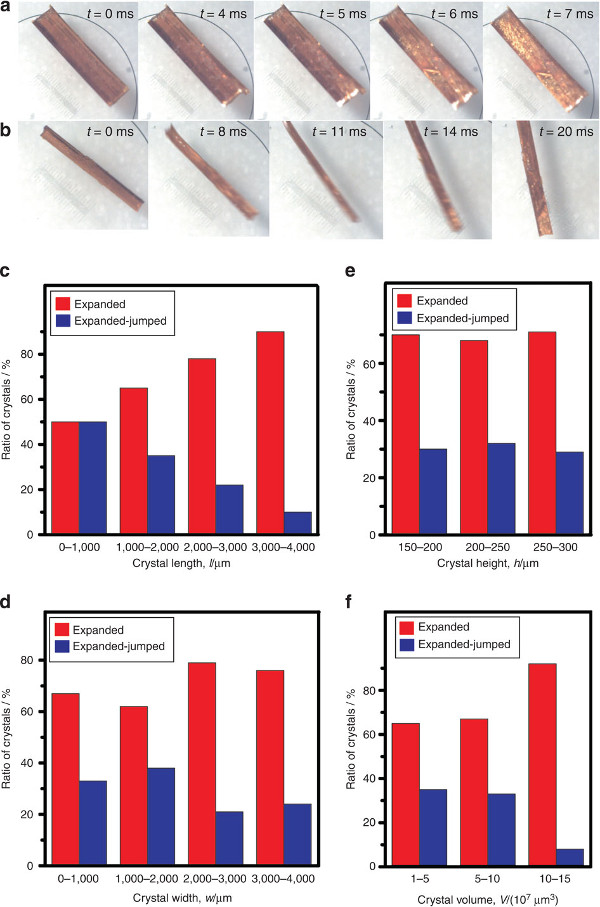Using AI to control energy for indoor agriculture
30 September 2024
Published online 14 September 2014

© Nature Communications/Panda, M. K.
Enlarge image
The phenomenon of crystals jumping in response to heat, known as the thermosalient effect, was first reported over thirty years ago, but the mechanism underlying the process remained unexplained.
The phenomenon proves that certain crystals can produce mechanical work in response to heat, providing the basis for the design of fast and efficient actuators.
Now, a team of researchers led by Pance Naumov of the New York University Abu Dhabi, UAE, have unraveled the mystery by publishing insights into the thermosalient effect in crystals of organometallic palladium (PHA) in Nature Communications1 .
PHA crystals exist in different crystal forms in the solid state known as polymorphs. The team found that when crystals of the alpha polymorph are exposed to heat they expand in volume, leading to the accumulation of internal strain within the crystal. Then, when a threshold value is reached, the strain is released in the form of elastic energy that converts the crystal into the metastable gamma polymorph and releases kinetic energy that propels the crystals to distances several thousand times their original size.
However, additional increase in temperature leads to a non-thermosalient transition into the most stable beta polymorph where no mechanical work is produced.
Analysing the thermosalient effect, the team also discovered a range of unique properties for this material. They found that PHA has a record breaking five polymorphs, an unprecedented feat given that not more than two polymorphs have ever been reported for any organometalic material.
“This system is posed to open prospects for future studies into the polymorphism, an important aspect of pharmaceutical chemistry,” says Naumov.
This atomic-scale understanding of the thermosalient effect could lead to performance enhancement of molecular self-actuating devices. “These materials can be used for dynamic technical elements in future soft robotics, self-healing and self-repairing materials, or advanced printing technologies,” adds Naumov.
doi:10.1038/nmiddleeast.2014.221
Stay connected: